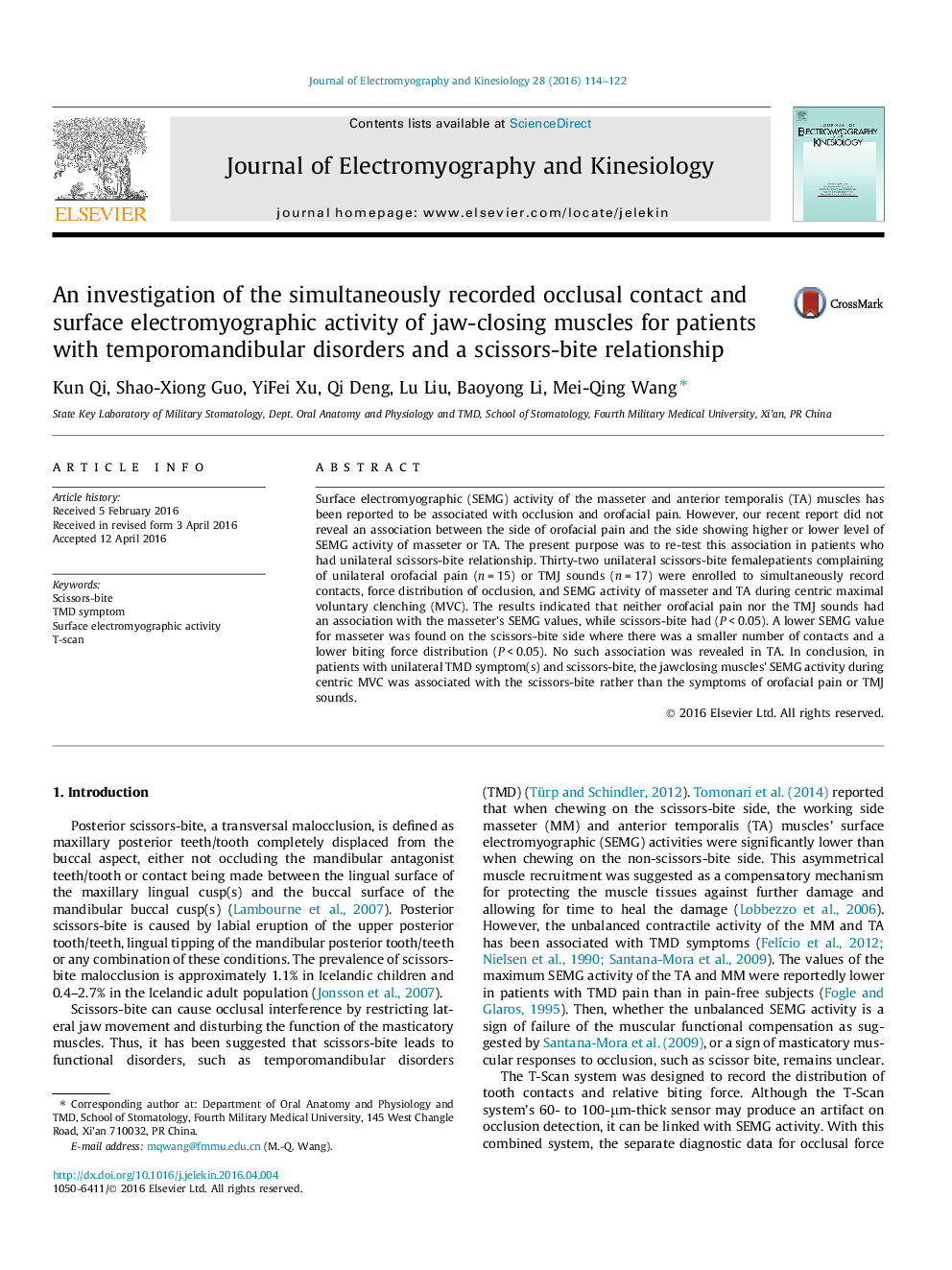| Article ID | Journal | Published Year | Pages | File Type |
|---|---|---|---|---|
| 4064409 | Journal of Electromyography and Kinesiology | 2016 | 9 Pages |
Surface electromyographic (SEMG) activity of the masseter and anterior temporalis (TA) muscles has been reported to be associated with occlusion and orofacial pain. However, our recent report did not reveal an association between the side of orofacial pain and the side showing higher or lower level of SEMG activity of masseter or TA. The present purpose was to re-test this association in patients who had unilateral scissors-bite relationship. Thirty-two unilateral scissors-bite femalepatients complaining of unilateral orofacial pain (n = 15) or TMJ sounds (n = 17) were enrolled to simultaneously record contacts, force distribution of occlusion, and SEMG activity of masseter and TA during centric maximal voluntary clenching (MVC). The results indicated that neither orofacial pain nor the TMJ sounds had an association with the masseter’s SEMG values, while scissors-bite had (P < 0.05). A lower SEMG value for masseter was found on the scissors-bite side where there was a smaller number of contacts and a lower biting force distribution (P < 0.05). No such association was revealed in TA. In conclusion, in patients with unilateral TMD symptom(s) and scissors-bite, the jawclosing muscles’ SEMG activity during centric MVC was associated with the scissors-bite rather than the symptoms of orofacial pain or TMJ sounds.
